BLOG
TIPS BEFORE BUYING WHEELS

BUYING WHEELS
If you are considering upgrading your car, van, or SUV with larger custom tires or replacing / restocking factory OEM tires, you've come to the right place. We have a wide variety of EO wheels available and / or alternatives with finishes: chrome, black, matte, custom colors, and much more. If you have already seen a set of rims to your liking, we are sure you will find them on our website.
When purchasing non-EO tires, it is important to keep in mind some basic terms that you will encounter during the ordering process for any tire. We will define terms that you may not be familiar with, such as offset (ET or OFFSET), HUB (center hole), PCD, and more. Each and every one of these measures affects whether a wheel will fit correctly on your make and model of vehicle. That is, the tires must be of the right dimensions to function properly on your car.
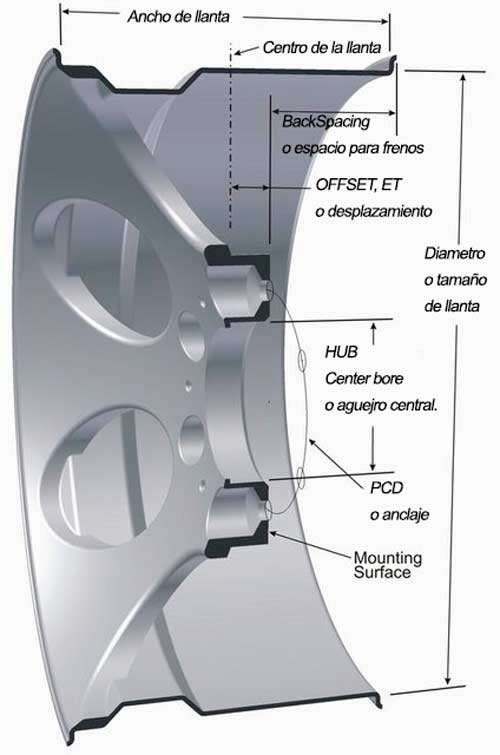
What is diameter and how does it affect us?
The diameter of a tire is the most well-known wheel dimension: when someone says they have 18 "tires, they mean the diameter of the tire. The actual diameter of a wheel is the distance between the bead seating areas (where the tire is sealed to the edge) NOT the overall diameter of the rim.
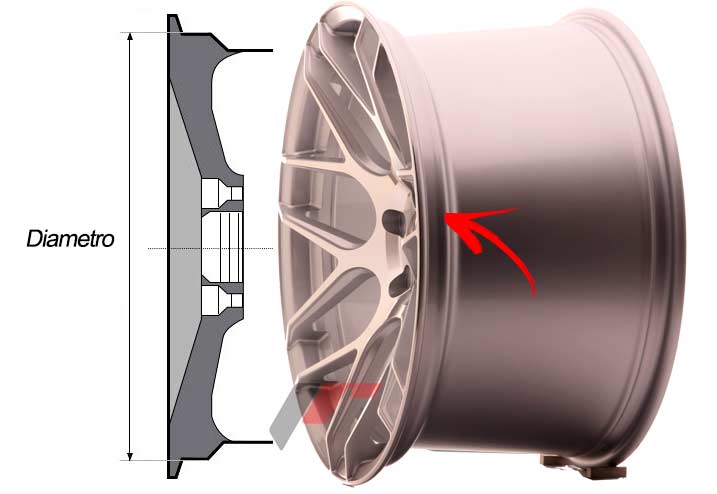
When choosing the diameter we want, we have to take into account that we will have to reduce the profile of the tire so that the total height of the rim + tire set remains the same regardless of the diameter of our rims.
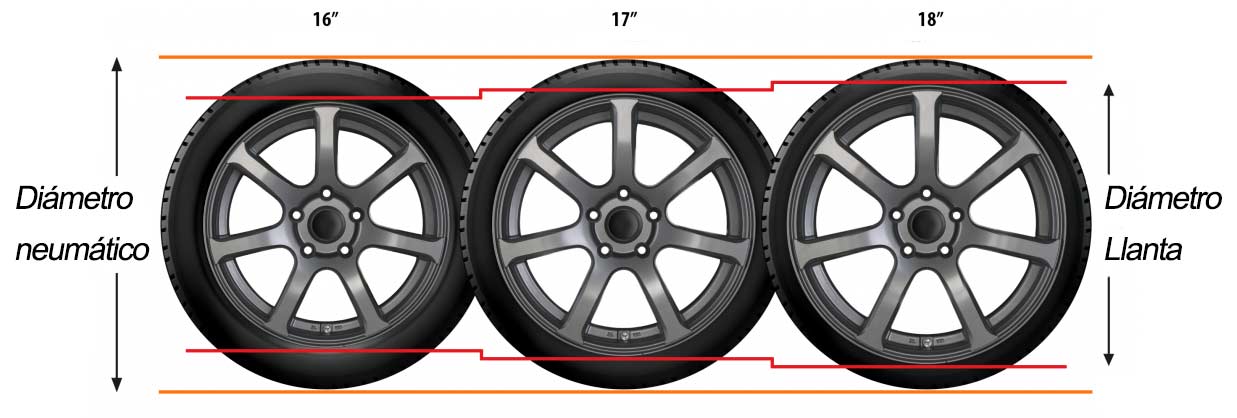
Maintaining the same total rim + tire height ensures that speedometer accuracy, driving comfort and control and factory braking as well as acceleration and maximum speed are maintained, therefore no other modifications to the vehicle are necessary.
Tire width, what is it and how is it measured?
Rim width is the distance between the tire bead seating areas across the edge of the wheel (NOT the distance from the outer edge of the wheel to the opposite edge). As with the diameter, the width of the rims have partially increased in response to the increased width of the tires in recent times. However, the most important consideration for the width of the rim is that it is the right size for the tires to be installed. Each tire manufacturer has a range of rim widths for each tire size; even within this range, the mounted width of the tire will change.

Once mounted, the actual width of the tire can increase by almost an inch in some cases when going from the narrowest edge to the widest allowed. This may not sound like a lot, but it can be critical when selecting a tire and wheel package. A tire mounted on a rim that is narrower than necessary can heavily pump the bead causing premature wear in the center of the tire tread and producing more imprecise steering handling.
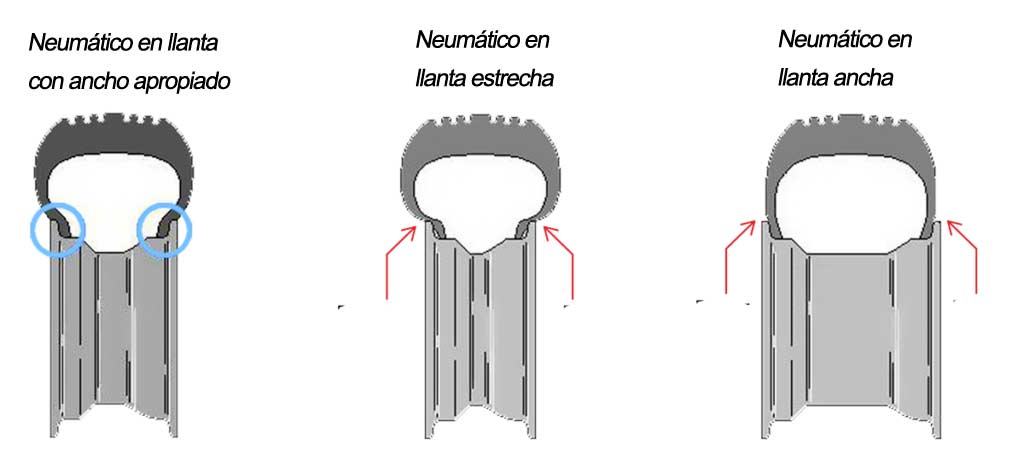
What is the ET / OFFSET?
The ET / OFFSET is the displacement of the tire within the vehicle's fender and the center of the tire is taken as a reference, which would be zero ET / OFFSET.
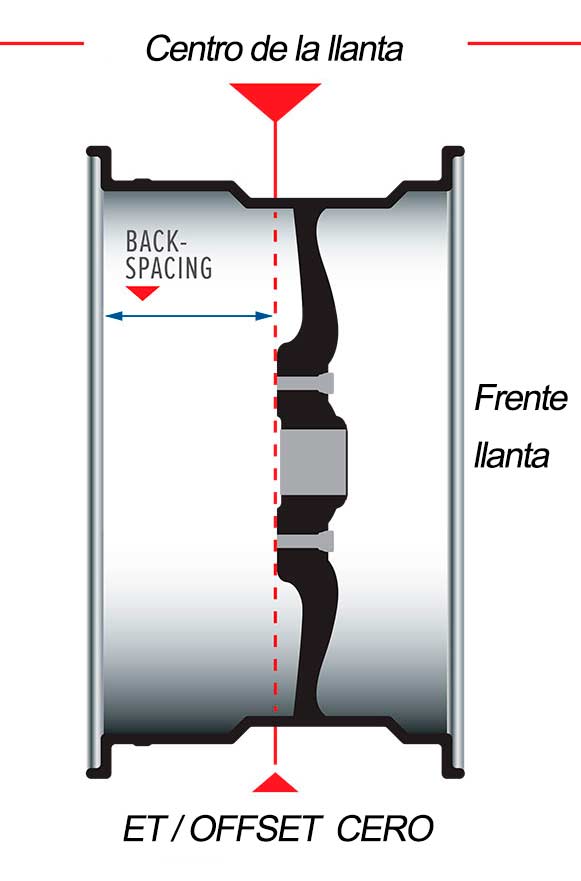 Contrary to what many people believe, the more positive the ET is, the closer the tire is to the suspension and brake disc and away from the mud guard, and the more negative it moves away from the suspension and towards the mud guard.
Contrary to what many people believe, the more positive the ET is, the closer the tire is to the suspension and brake disc and away from the mud guard, and the more negative it moves away from the suspension and towards the mud guard.

For this reason, you should be especially careful when trying to fit a rim that radically alters the offset, as it may make contact with the suspension and / or braking system, or, if you move too far, the tire will touch the fender.
vs Oct 2021



Leave your comment